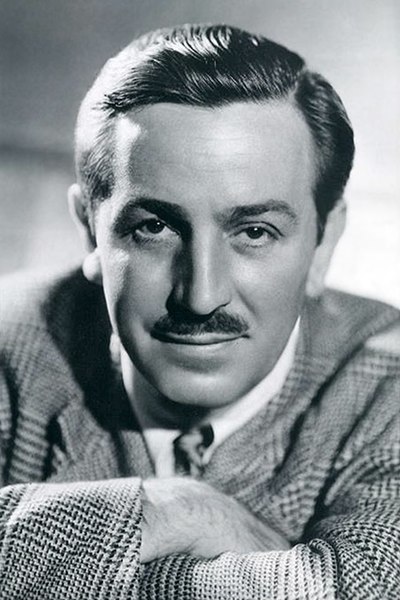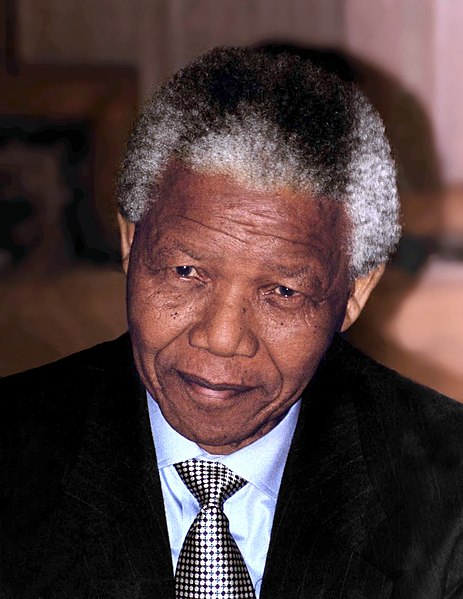Leading with Magic: Unveiling Walt Disney’s Timeless Leadership Lessons

The Transformative Power of Walt Disney’s Leadership Legacy
Walt Disney, a name synonymous with magic, imagination, and creativity, holds a special place in the hearts of millions around the world. From the enchanting tales of Mickey Mouse and Snow White to the groundbreaking achievements of Disneyland and the iconic Walt Disney World Resort, Walt Disney’s legacy has shaped the very fabric of entertainment and inspired generations of dreamers. Beyond the realm of entertainment, however, lies a treasure trove of leadership wisdom that can be gleaned from the life and accomplishments of this visionary pioneer.
Brief overview of Walt Disney’s life and achievements
Born on December 5, 1901, in Chicago, Illinois, Walter Elias Disney had an early fascination with drawing and storytelling. His journey began as a struggling cartoonist in Kansas City, where he faced numerous setbacks but never lost sight of his dreams. In 1923, he co-founded the Disney Brothers Studio, which eventually became The Walt Disney Company.
With his indomitable spirit and relentless pursuit of innovation, Walt Disney introduced the world to the concept of synchronized sound in animation with the creation of “Steamboat Willie,” the debut of Mickey Mouse. This groundbreaking achievement revolutionized the animation industry and laid the foundation for Disney’s ascent to becoming an international entertainment powerhouse.
Walt Disney’s crowning glory, Disneyland, opened its gates on July 17, 1955, in Anaheim, California, forever changing the concept of amusement parks. This pioneering venture not only provided a platform for storytelling and immersive experiences but also showcased Disney’s visionary leadership in bringing together diverse talents to create a seamless and magical environment.
Exploring the timeless leadership lessons we can learn from Walt Disney’s innovative and visionary approach
Walt Disney’s leadership journey is an extraordinary tale of courage, resilience, and unyielding dedication. Behind the enchantment and fantasy, lies a wealth of leadership lessons that continue to resonate and inspire leaders across industries today. This article sets out on a captivating exploration of the transformative power of Walt Disney’s leadership legacy, revealing the enduring principles that underpin his innovative and visionary approach. From embracing failure to fostering creativity and building high-performing teams, we will uncover the invaluable insights that can be applied to our own leadership journeys. By delving into the life and achievements of Walt Disney, we have the opportunity to unlock the magic of leadership and learn from one of the greatest visionaries of our time.
The Dreamer’s Vision
Unleashing imagination: How Walt Disney’s dreams shaped his leadership philosophy
Walt Disney was a true dreamer, driven by an insatiable appetite for imagination and creativity. He understood that to create something truly remarkable, one must first dare to dream big. Disney’s vision extended far beyond mere cartoons and movies; he aspired to build entire worlds where people could escape reality and immerse themselves in magical experiences.
This unwavering belief in the power of imagination became the cornerstone of Walt Disney’s leadership philosophy. He encouraged his team to think beyond conventional boundaries, to challenge the status quo, and to envision the impossible. By fostering an environment that embraced imagination, Disney set the stage for groundbreaking innovations and unparalleled storytelling.
Embracing failure as a stepping stone to success: Early setbacks and lessons learned
Walt Disney’s path to success was not without its fair share of failures and obstacles. From the bankruptcy of his first animation studio to the initial struggles of Disneyland, Disney faced numerous setbacks throughout his career. However, he possessed a unique perspective on failure – he saw it not as a roadblock, but as an opportunity for growth and learning.
Disney understood that failure was an inherent part of the creative process. He believed that taking risks and pushing boundaries would inevitably lead to some missteps along the way. Rather than dwelling on failures, Disney encouraged his team to learn from them, adapt, and persist. This resilience and ability to bounce back from adversity became a hallmark of his leadership style.
Cultivating a culture of creativity and innovation
Walt Disney recognized that nurturing a culture of creativity and innovation was essential to sustaining his vision. He surrounded himself with talented individuals from diverse backgrounds, fostering an environment where ideas could flourish and collaboration could thrive. Disney’s ability to harness the collective genius of his team allowed for the continuous generation of groundbreaking concepts and experiences.
Within the Disney organization, creativity was not confined to the artists alone. Disney believed in democratizing innovation, encouraging employees from all departments to contribute ideas and solutions. He fostered a culture where everyone felt empowered to explore their creative potential, knowing that the next breakthrough could come from anywhere within the company.
To facilitate this culture of creativity, Disney implemented initiatives such as “Imagineering,” a multidisciplinary approach that brought together artists, engineers, designers, and storytellers. By breaking down traditional silos and encouraging cross-pollination of ideas, Disney unleashed the full creative force of his team, resulting in iconic creations that continue to enchant audiences to this day.
In the next sections, we will delve deeper into specific aspects of Walt Disney’s leadership style and the valuable lessons we can glean from his approach. We will explore the power of storytelling, building high-performing teams, embracing innovation, and the importance of vision and strategy. Through these insights, we will gain a comprehensive understanding of the leadership principles that propelled Walt Disney to become an enduring legend in the realm of imagination and entertainment.
The Power of Storytelling
The magic of storytelling: Walt Disney’s ability to captivate and engage audiences
Walt Disney understood that at the heart of any successful venture lies a compelling narrative. He recognized the transformative power of storytelling in connecting with audiences on an emotional level. Through his captivating storytelling, Disney transported viewers into immersive worlds, leaving a lasting impact on their hearts and minds.
Disney possessed a deep understanding of human emotions and desires, allowing him to craft narratives that resonated with people of all ages. Whether it was the tale of a young princess dreaming of true love or the adventures of a brave mouse, Disney knew how to tap into universal themes and create characters that captured the imagination.
By weaving captivating stories, Disney was able to forge an emotional bond with his audience. He understood that great storytelling was not just about entertainment; it was about evoking emotions, inspiring dreams, and instilling values. His ability to create narratives that touched the core of human experience set him apart as a master storyteller.
Crafting narratives with a purpose: Aligning stories with core values and vision
Walt Disney believed that stories had the power to shape culture and influence society. He recognized the responsibility that came with storytelling and used it as a vehicle to promote his core values and vision. Whether it was promoting family values, fostering a sense of wonder, or celebrating the triumph of good over evil, Disney’s narratives were imbued with meaning and purpose.
Disney’s commitment to storytelling with a purpose extended beyond the entertainment realm. He leveraged the power of storytelling to educate and inspire, creating educational films and documentaries that brought knowledge and awareness to audiences. Through these efforts, Disney demonstrated that storytelling could be a force for positive change and social impact.
Additionally, Disney ensured that his stories were aligned with his company’s overall vision. Each narrative, whether in a film or within the theme parks, contributed to the larger tapestry of the Disney experience. This cohesive storytelling approach allowed Disney to create a seamless and immersive world where audiences could fully immerse themselves in the magic.
Lessons in effective communication and inspiring others through storytelling
Walt Disney’s ability to communicate his vision and inspire others through storytelling was instrumental in his success. He possessed a charismatic presence and a genuine passion for his craft, which allowed him to captivate and engage those around him. Disney understood that effective leadership involved not only sharing ideas but also connecting with people on a deeper level.
As leaders, we can learn from Disney’s storytelling prowess to enhance our own communication skills. We must strive to communicate our vision and values in a compelling and relatable manner. By crafting narratives that resonate with our teams, we can inspire them to embrace a shared purpose and work towards a common goal.
Furthermore, Disney’s storytelling approach teaches us the importance of listening to others’ stories. By understanding the perspectives and experiences of those around us, we can create a more inclusive and empathetic environment. Effective leaders recognize the power of storytelling as a tool for fostering connections, building trust, and driving meaningful change.
Walt Disney’s legacy as a master storyteller endures to this day. His ability to transport audiences to enchanting worlds, convey meaningful messages, and inspire imagination serves as a testament to the profound impact storytelling can have. By embracing the power of storytelling, leaders can unlock the potential to captivate, engage, and inspire their teams, ultimately creating a shared narrative that propels organizations forward.
In the following sections, we will explore how Walt Disney built and sustained high-performing teams, embraced innovation and adaptability, and established a clear vision and strategy. By delving deeper into these aspects of his leadership, we can uncover further insights into the enduring legacy of Walt Disney and the valuable lessons we can apply in our own leadership journeys. Let us embark on a captivating exploration of Walt Disney’s leadership principles and stories, and discover how we can harness the power of storytelling to inspire, communicate effectively, and drive positive change within our organizations. Get ready to unlock the magic of leadership through the captivating tales of Walt Disney.
Building and Sustaining a High-Performing Team
Assembling a dream team: Walt Disney’s approach to talent acquisition
Walt Disney understood that the success of his ventures hinged upon the talent and expertise of the individuals he surrounded himself with. He possessed a keen eye for recognizing potential and was relentless in his pursuit of assembling a dream team. Disney sought out individuals who shared his passion for excellence and his unwavering commitment to pushing boundaries.
Disney’s approach to talent acquisition went beyond simply hiring based on qualifications. He looked for individuals who possessed a unique blend of creativity, adaptability, and a genuine love for their craft. Whether it was animators, imagineers, or park designers, Disney sought out those who could bring his vision to life and contribute their own innovative ideas to the mix.
Additionally, Disney prioritized diversity within his team. He understood that different perspectives and backgrounds fostered creativity and allowed for a more comprehensive understanding of his diverse audience. By actively seeking out individuals from different walks of life, Disney ensured that his team was reflective of the world he aimed to entertain.
Nurturing creativity and collaboration within the organization
Walt Disney believed that nurturing creativity and fostering collaboration were vital for unlocking the full potential of his team. He created an environment where individuals felt encouraged to explore their ideas, take risks, and think outside the box. Disney believed that true innovation came from providing a safe space for experimentation and embracing the inherent messiness of the creative process.
Disney’s commitment to nurturing creativity was evident in the establishment of the Disney Animation Studios, where animators were given the freedom to develop their skills and explore their artistic visions. Disney encouraged collaboration among his animators, recognizing that the best ideas often emerged through the cross-pollination of talents and perspectives.
Moreover, Disney fostered a culture of trust and open communication, where team members felt empowered to share their ideas and offer constructive feedback. He believed that everyone in the organization had a valuable contribution to make and that the best results came from harnessing the collective creativity of the team.
Leading by example: Walt Disney’s hands-on involvement in every aspect of his company
One of the defining characteristics of Walt Disney’s leadership style was his hands-on involvement in every aspect of his company. He led by example, immersing himself in the details, and setting high standards for himself and his team. Disney’s passion, dedication, and relentless pursuit of perfection inspired those around him to strive for excellence.
Whether it was providing input on animation techniques, personally inspecting the construction of Disneyland, or meticulously reviewing scripts and storyboards, Disney’s involvement demonstrated his commitment to quality and his deep understanding of the creative process. His active presence and genuine interest in the work of his team members instilled a sense of pride and accountability within the organization.
Furthermore, Disney’s hands-on approach allowed him to lead with empathy and understanding. He knew the challenges his team faced because he experienced them firsthand. This intimate knowledge enabled him to provide the necessary support, resources, and guidance to help his team overcome obstacles and reach new heights.
Walt Disney’s approach to building and sustaining a high-performing team serves as a valuable lesson for leaders in any industry. By carefully selecting individuals who align with the organization’s vision and values, fostering a culture of creativity and collaboration, and leading by example, leaders can create an environment where innovation thrives and excellence becomes the norm.
In the subsequent sections, we will explore Walt Disney’s embrace of innovation and adaptability, his strategic vision and decision-making, as well as his enduring legacy and the lessons we can apply to modern leadership challenges. By continuing our journey through the leadership lessons and stories of Walt Disney, we can glean invaluable insights to elevate our own leadership journeys and drive meaningful impact.
Embracing Innovation and Adaptability
The spirit of continuous improvement: Walt Disney’s relentless pursuit of innovation
Walt Disney was an innovator at heart, constantly pushing the boundaries of what was thought possible. He understood that in order to stay ahead in a rapidly evolving world, one must embrace a spirit of continuous improvement. Disney’s relentless pursuit of innovation permeated every aspect of his company, from animation techniques to theme park experiences.
Disney was never content with resting on past successes. He encouraged his team to explore new technologies, experiment with different artistic styles, and push the limits of storytelling. This commitment to innovation allowed Disney’s animations to evolve and improve over time, captivating audiences with each new release. From the pioneering use of Technicolor in “Snow White and the Seven Dwarfs” to the introduction of the multiplane camera in “Pinocchio,” Disney revolutionized the animation industry through his unwavering pursuit of cutting-edge techniques.
Adapting to change: Lessons from Disneyland’s evolution and expansion
Walt Disney understood that in order to thrive in a changing world, one must be willing to adapt and evolve. This was evident in his approach to Disneyland, which underwent continuous expansion and transformation throughout the years. Disney recognized that staying relevant meant listening to audience feedback, monitoring industry trends, and making necessary adjustments to meet the ever-changing demands of the market.
Disneyland was not conceived as a static entity; it was designed to be a living, breathing environment that could evolve and grow alongside its visitors. Disney introduced new attractions, expanded themed lands, and introduced technological advancements to enhance the guest experience. From the introduction of iconic rides like Pirates of the Caribbean and Space Mountain to the creation of immersive lands such as New Orleans Square and Tomorrowland, Disneyland underwent constant transformation to deliver new and exciting experiences to its visitors.
Disney’s ability to adapt to change extended beyond the physical aspects of the park. He recognized the importance of embracing emerging trends and technologies. For instance, Disney was an early adopter of television, understanding its potential as a powerful medium to reach audiences and promote his brand. He launched the “Disneyland” television show, which not only showcased the park but also provided a platform to entertain and educate viewers. This strategic adaptation to new mediums and technologies ensured Disney’s continued relevance and influence in the entertainment industry.
Fostering a culture of experimentation and learning from failures
Walt Disney understood that with innovation and adaptation comes the inherent risk of failure. However, he saw failure not as an end but as an opportunity for growth and learning. Disney fostered a culture of experimentation, where his team felt empowered to take risks, explore new ideas, and learn from their mistakes.
One notable example is the initial struggles faced by Disneyland when it first opened its doors in 1955. Despite months of preparation, the park faced logistical challenges, overcrowding, and technical issues. Instead of viewing these setbacks as insurmountable failures, Disney used them as valuable lessons. He listened to guest feedback, addressed the operational issues, and continuously improved the park to ensure a better experience for visitors.
Disney’s approach to failure emphasized the importance of a growth mindset and resilience. He encouraged his team to learn from their mistakes, iterate on their ideas, and persevere in the face of adversity. This culture of embracing failures as opportunities for improvement not only fostered innovation but also nurtured a team that was unafraid to take risks and explore new frontiers.
By embracing innovation, adapting to change, and fostering a culture of experimentation, Walt Disney demonstrated the importance of remaining agile and forward-thinking in leadership. These principles are as relevant today as they were during Disney’s time, serving as a reminder that in a rapidly changing world, leaders must embrace new ideas, technologies, and approaches to stay ahead of the curve.
The Importance of Vision and Strategy
Creating a compelling vision: Walt Disney’s ability to inspire and motivate his team
Walt Disney was a visionary leader who possessed the remarkable ability to articulate a compelling vision that inspired and motivated his team. He had a clear vision of what he wanted to achieve and effectively communicated it to those around him. Disney’s vision went beyond mere financial success; it encompassed a commitment to quality, innovation, and creating experiences that would leave a lasting impact.
Disney’s ability to paint a vivid picture of the future allowed his team to align their efforts and work towards a common goal. He articulated his vision with passion and clarity, instilling a sense of purpose and excitement within the organization. This unwavering belief in his vision served as a driving force, propelling his team to achieve extraordinary results.
Disney’s vision extended beyond the boundaries of his individual projects. He envisioned Disneyland as not just an amusement park but as a place where families could create cherished memories together. His vision for Disneyland went beyond the attractions and rides; he aimed to create an immersive environment that transported guests into magical worlds. This holistic vision guided the development of Disneyland, ensuring that every aspect of the park contributed to the overall experience.
Strategy and execution: Balancing big-picture thinking with attention to detail
While Walt Disney was a dreamer, he was also a meticulous strategist. He understood that a compelling vision was only the beginning; it needed a well-defined strategy and effective execution to become a reality. Disney recognized the importance of striking a balance between big-picture thinking and attention to detail.
Disney’s strategic mindset allowed him to break down his vision into actionable steps. He established clear objectives and milestones, providing a roadmap for his team to follow. This strategic approach ensured that every decision and action was aligned with the overarching vision and moved the organization closer to its goals.
At the same time, Disney understood the significance of paying attention to the smallest details. He recognized that even the smallest elements contributed to the overall experience and could make a significant impact on guests. Whether it was meticulously designing the layout of Disneyland to optimize flow and guest experience or obsessing over the intricate details of an animated character, Disney’s attention to detail set his creations apart.
Disney’s ability to balance big-picture thinking with a focus on details allowed him to create immersive and cohesive experiences. It ensured that the strategic direction of the company was supported by careful execution, resulting in the seamless integration of vision, strategy, and implementation.
Lessons in long-term planning and strategic decision-making
Walt Disney’s success was not only attributed to his compelling vision and strategic mindset but also to his long-term planning and strategic decision-making. He was known for his ability to anticipate future trends, identify opportunities, and make bold decisions that propelled his company forward.
Disney’s long-term planning was evident in the development of Disneyland. He carefully selected the location, considering factors such as accessibility and potential for expansion. He envisioned Disneyland as a long-lasting institution, built to withstand the test of time. This forward-thinking approach allowed Disneyland to grow and evolve, becoming an iconic symbol of entertainment and imagination.
In addition to long-term planning, Disney was not afraid to make strategic decisions that defied conventional wisdom. For instance, when creating Snow White and the Seven Dwarfs, many doubted the viability of a feature-length animated film. However, Disney persisted, investing time, resources, and creative talent into the project. The film’s immense success not only revolutionized the animation industry but also solidified Disney’s position as a pioneer.
Disney’s strategic decision-making was grounded in a deep understanding of his audience and a willingness to take calculated risks. He knew that in order to remain at the forefront, he had to constantly innovate and take calculated risks. Disney understood that strategic decisions were not solely based on financial considerations but also on the emotional connection and experience they would create for the audience.
One example of Disney’s strategic decision-making was the creation of Disneyland. At the time, amusement parks were considered chaotic and disorganized. Disney saw an opportunity to transform the concept of amusement parks into immersive, thematic experiences. He meticulously planned the layout, attractions, and overall guest experience, ensuring that each element contributed to the park’s overarching vision. This strategic decision to create a new kind of amusement park revolutionized the industry and set the stage for the modern theme park experience.
Disney’s approach to long-term planning and strategic decision-making provides valuable lessons for leaders today. By embracing a future-oriented mindset, leaders can anticipate trends, identify opportunities, and make bold decisions that propel their organizations forward. They can strategically align their actions with their vision, ensuring that every decision contributes to the long-term success of the organization.
As we continue to explore Walt Disney’s leadership lessons and stories, we gain deeper insights into the significance of having a compelling vision, developing strategic plans, and making informed decisions. By combining the power of vision with effective strategy and execution, leaders can create a roadmap for success, inspire their teams, and achieve remarkable outcomes.
In the following section, we will delve into the enduring legacy of Walt Disney, examining his impact on the entertainment industry, his approach to legacy-building and succession planning, and how his principles can be applied to address modern leadership challenges. By drawing inspiration from Walt Disney’s leadership journey, we can navigate the complexities of leadership with wisdom, creativity, and a touch of magic.
The Leader’s Legacy
Leaving a lasting impact: Walt Disney’s influence on the entertainment industry
Walt Disney’s leadership journey left an indelible mark on the entertainment industry, transforming it in ways that continue to resonate to this day. His relentless pursuit of innovation, commitment to storytelling, and dedication to creating immersive experiences revolutionized animation, theme parks, and the broader world of entertainment.
Disney’s influence on animation cannot be overstated. With the creation of Snow White and the Seven Dwarfs, the first full-length animated feature film, Disney pioneered a new form of storytelling. He elevated animation from short, humorous cartoons to a medium capable of evoking deep emotions and captivating audiences for extended periods. This groundbreaking achievement set the stage for the Golden Age of Animation and solidified Disney’s reputation as an animation pioneer.
Beyond animation, Disney’s impact extended to theme parks. The success of Disneyland paved the way for the development of Walt Disney World Resort, Disneyland Paris, Tokyo Disneyland, and others. Disney’s vision of a place where people could escape reality and immerse themselves in enchanting experiences became a global phenomenon. Today, Disney parks are renowned for their attention to detail, immersive storytelling, and unwavering commitment to guest satisfaction.
Additionally, Disney’s influence extended to other forms of entertainment. From television shows like “The Mickey Mouse Club” to beloved characters like Mickey Mouse and Donald Duck, Disney’s creations became cultural icons that have stood the test of time. His impact on popular culture is immeasurable, and his characters and stories have become an integral part of the global collective consciousness.
Lessons in legacy-building and succession planning
Walt Disney’s legacy extends beyond his individual achievements. He built a company that has continued to thrive and expand, even after his passing. Disney’s approach to legacy-building and succession planning offers valuable insights for leaders seeking to create a lasting impact.
One key aspect of Disney’s legacy-building was his emphasis on nurturing and developing talent within the organization. He recognized the importance of grooming future leaders and ensuring a smooth transition of leadership. Disney invested in the growth and development of his team members, fostering a culture of continuous learning and advancement. This commitment to talent development helped to sustain the company’s success and ensure its longevity.
Additionally, Disney’s commitment to maintaining the integrity of his brand and vision played a crucial role in building his legacy. He established a set of core values and principles that guided the company’s operations and decision-making. Disney’s unwavering commitment to quality, creativity, and storytelling served as the foundation for the company’s continued success. By staying true to his core values, Disney created a legacy that has endured long after his passing.
Succession planning was also a significant aspect of Disney’s legacy-building strategy. He recognized the importance of identifying and preparing future leaders to carry on his vision. Disney actively mentored and groomed talented individuals within the company, ensuring a seamless transition of leadership. This thoughtful approach to succession planning contributed to the continuity and stability of the organization, allowing it to thrive even in the absence of its visionary founder.
Applying Walt Disney’s principles to modern leadership challenges
The principles and lessons learned from Walt Disney’s leadership journey remain highly relevant in today’s rapidly changing business landscape. Leaders can draw inspiration from Disney’s approach and apply it to navigate modern leadership challenges.
Firstly, Disney’s unwavering commitment to innovation serves as a powerful lesson for leaders in today’s dynamic environment. Embracing innovation, exploring emerging technologies, and encouraging a culture of experimentation can help leaders stay ahead of the curve and drive organizational growth.
Secondly, Disney’s emphasis on the power of storytelling reminds leaders of the importance of effectively communicating their vision, engaging employees, and connecting with stakeholders on an emotional level to foster alignment and inspire action.
Additionally, Disney’s focus on building high-performing teams provides valuable insights for modern leaders. By assembling diverse and talented individuals, nurturing a culture of collaboration and creativity, and leading by example, leaders can cultivate teams that drive innovation, achieve exceptional results, and adapt to changing circumstances.
Furthermore, Disney’s strategic mindset and long-term planning offer guidance for leaders in navigating uncertainty and setting a clear direction for their organizations. By developing a compelling vision, formulating strategic plans, and making informed decisions, leaders can create a roadmap for success and guide their teams through challenging times.
Lastly, Disney’s legacy-building and succession planning strategies highlight the importance of talent development, maintaining organizational values, and preparing future leaders. Leaders must invest in talent, foster a learning culture, and ensure a smooth transition of leadership to sustain their organization’s success over the long term.
Walt Disney’s leadership journey provides a wealth of timeless lessons and stories that resonate with leaders across industries. His ability to unleash imagination, embrace failure, cultivate a culture of creativity, adapt to change, and create a compelling vision has left an enduring impact on the entertainment industry and beyond. By applying Disney’s principles of leadership to modern challenges, leaders can inspire innovation, engage their teams, navigate uncertainty, and build a lasting legacy. Just as Walt Disney transformed the world of entertainment, his leadership legacy continues to inspire and guide leaders towards creating their own magic in the realm of leadership.
Unleashing the Magic Within: Applying Walt Disney’s Leadership Lessons Today
Throughout this exploration of Walt Disney’s leadership legacy, we have uncovered a multitude of valuable insights and lessons that leaders can apply to their own journeys. From his unwavering commitment to innovation and creativity to his ability to inspire and motivate through the power of storytelling, Disney’s leadership approach offers a blueprint for success.
We have learned the importance of unleashing imagination and embracing failure as stepping stones to success. Disney’s ability to dream big and persevere in the face of adversity serves as a reminder that great achievements often require taking risks and learning from setbacks.
We have also witnessed the significance of cultivating a culture of creativity and collaboration. Disney’s approach to talent acquisition, nurturing diverse teams, and encouraging an environment where ideas can flourish demonstrates the power of collective genius and the value of bringing together individuals from different backgrounds and disciplines.
Furthermore, Disney’s emphasis on innovation and adaptability showcases the need for leaders to continuously evolve and embrace change. By remaining open to new ideas, technologies, and approaches, leaders can stay ahead in a rapidly changing world and drive their organizations towards success.
Disney’s strategic mindset, long-term planning, and attention to detail underscore the importance of balancing big-picture thinking with meticulous execution. Leaders must create compelling visions, formulate strategic plans, and pay attention to the smallest details to ensure their organizations’ success and deliver exceptional experiences to their stakeholders.
The leadership lessons and stories from Walt Disney’s journey are not meant to exist solely as stories from the past. They are meant to inspire and guide leaders in the present and the future. As we conclude this exploration, I encourage you, as a leader, to reflect on the profound wisdom embedded in Disney’s leadership legacy and apply it to your own endeavors.
Unleash your imagination, embrace failure as an opportunity to learn and grow, and create a culture that fosters creativity and collaboration. Embrace innovation, adapt to change, and develop strategic plans that align with your vision. Pay attention to the smallest details, build high-performing teams, and invest in talent development. By doing so, you can create a lasting impact and leave a legacy that inspires others.
Walt Disney’s enduring legacy extends far beyond the realms of animation and entertainment. His innovative and visionary approach to leadership continues to inspire and captivate leaders across industries. From his humble beginnings as a struggling cartoonist to the creation of a global entertainment empire, Disney’s journey is a testament to the transformative power of leadership.
As leaders, we have the opportunity to learn from Walt Disney’s remarkable journey and adapt his principles to our own contexts. By embracing the lessons of imagination, innovation, and strategic vision, we can unlock the magic within ourselves and create extraordinary experiences for those we lead.
Walt Disney once said, “If you can dream it, you can do it.” Let us carry forward the legacy of Walt Disney, embracing his leadership lessons and stories, and continue to dream, innovate, and lead with the same passion, creativity, and determination that he exemplified. In doing so, we can create our own stories of leadership success and inspire others to unleash their own potential.





